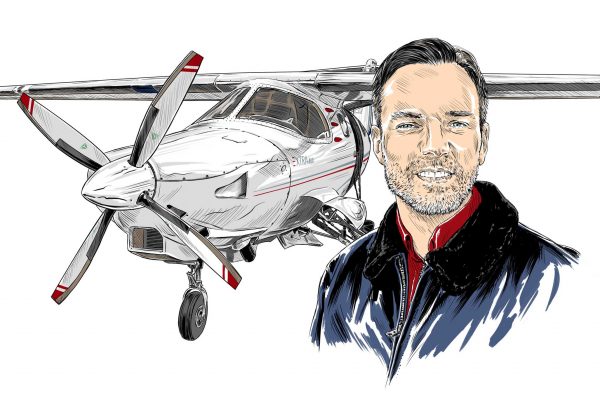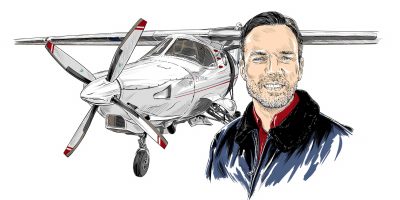Have you ever experienced that sensation when perhaps the aircraft is a bit more heavily loaded than normal, it’s hot and windless and as you accelerate down the runway, you are conscious of a few extra seconds passing before reaching flying speed and the opposite end of the runway coming just that bit closer? This may or may not have been a surprise, depending on to what extent you anticipated or calculated your take-off performance on the day.
As the summer tails off the performance reductions associated with high temperatures tend to be less of an issue, but other factors such as wet grass or mud might come into play.
From a regulatory point of view, for Part-21 (formerly EASA) aircraft flying under the UK version of Part-NCO, the basic requirement is set out at NCO.POL.110 –
‘The pilot-in-command shall only operate the aircraft if the performance is adequate to comply with the applicable rules of the air and any other restrictions applicable to the flight, the airspace or the aerodromes or operating sites used, taking into account the charting accuracy of any charts and maps used.’
The above is not just talking about take-off and landing performance, but let’s focus on that. Like many judgements in GA, it comes down to when it is safe to eyeball – and when to check the book. The first step is recognising aircraft and operating conditions (such as weight, distances available, density altitude) that require a calculation to be made and then understanding how to make this accurately.
Whatever is in your aircraft flight manual (AFM) or other available data, knowledge of some definitions is essential:
- ‘Take-off run’, ‘ground run’ or ‘ground roll’ refers to the distance over which the aircraft’s wheels will be in contact with the surface before lifting off. It does not reference any obstacle clearance.
- ‘Take-off distance’ includes the ground run, plus the horizontal distance of a climb to (normally) 50ft.
- ‘Landing run’ or ‘roll’ refers to the distance the aircraft needs from touchdown to stopping.
- ‘Landing distance’ is the distance between the aircraft crossing the threshold at a specified height (normally 50ft) and stopping.
It is important that any technique requirements and speeds stated in the AFM are adhered to, for example applying full power on the brakes before commencing the take-off.
When operating from a licensed aerodrome, the AIP or VFR Flight Guide will have corresponding ‘declared distances’ available that match the definitions above. For non-commercial flight there is no legal requirement to add any margin to these figures, but practically given the number of variables involved in performance it is wise to. It only takes an aircraft slightly down on power or imperfect landing technique to use up more distance.
Things become more complex with operating sites that do not have formal declared distances and/or there may be surface conditions present that are not quoted for in the AFM. For example, if you are taking off from a strip you might know the length of the strip and know that the ground run will be within the length, but what if the take-off distance exceeds the strip length? Are you sure there is enough clear space beyond the strip to get to 50ft? Similarly for landing, the strip length might be more than landing distance required, but do you know that you will be able to cross the threshold at the AFM prescribed height?
If dealing with wet grass or soft ground for example the AFM may not have figures for this. Years ago, the CAA produced a ‘Safety Sense’ Leaflet on light aircraft performance and included some helpful factors to take account of common surface issues when calculating take-off and landing distances:
| Condition |
Take-off |
Landing |
| Dry grass (up to 20 cm) |
x 1.2 |
x 1.15 |
| Wet grass (up to 20 cm) |
x 1.3 |
x 1.35 |
| Wet paved surface |
– |
x 1.15 |
| Soft ground or snow |
x 1.25 |
x 1.25 |
| 2% upslope |
x 1.1 |
– |
| 2% downslope |
– |
x 1.1 |
On top of the above (or the unfactored AFM data, or combination thereof) the CAA recommend factoring the overall distances by 1.25 for take-off and 1.43 for landing (these are approximately based on the factors that a commercial operator of a light aircraft would be required to apply).
The table also included a few some generic factors for environmental variables that could be applied if for example AFM data did not cover them or was completely lacking:
| Change |
Take-off |
Landing |
| 10% weight increase |
x 1.2 |
x 1.1 |
| 1,000 ft elevation increase |
x 1.1 |
x 1.05 |
| 10°C increase in temperature |
x 1.1 |
x 1.05 |
| Tailwind 10% of lift off or touchdown speed |
x 1.2 |
x 1.2 |
Another issue to consider is when to abort a take-off due to poor acceleration or a problem with the aircraft. Twin engine aircraft will normally have an ‘accelerate-stop distance’ (ASDA) and if operating from a short runway, be careful if it is shorter than the ASDA. Similarly on short runways it is wise to have a point at which you will abort if you have not achieved a certain speed.




